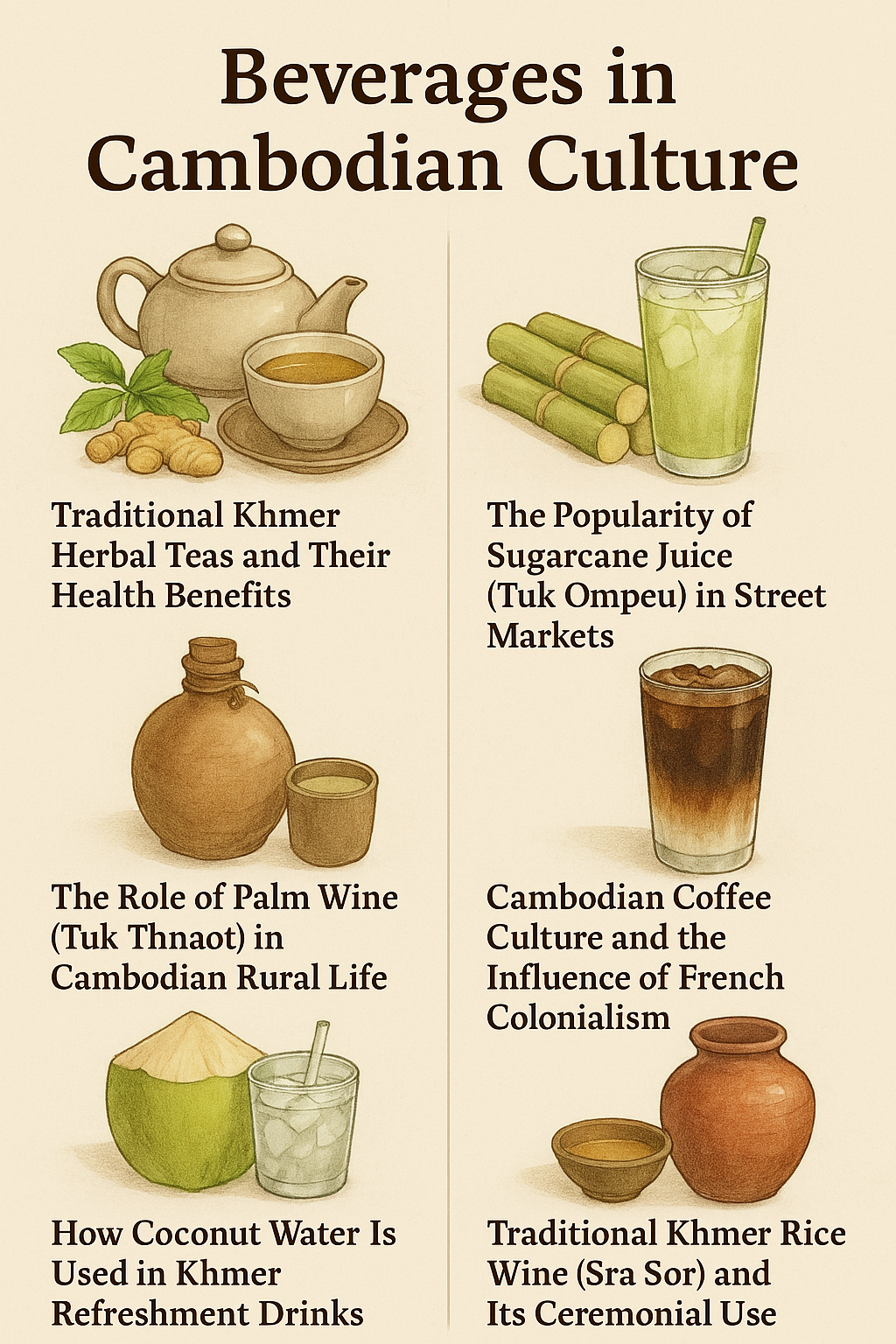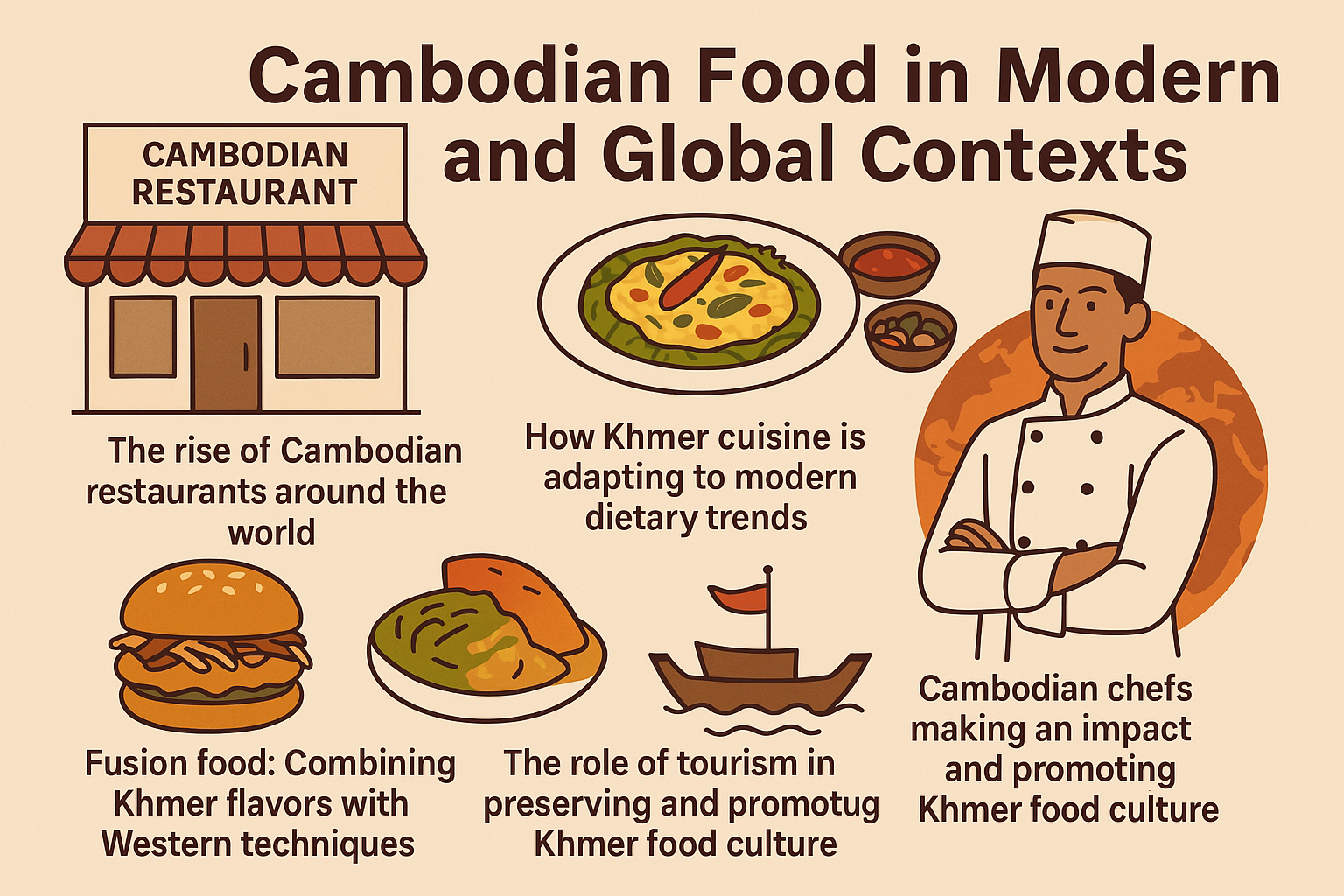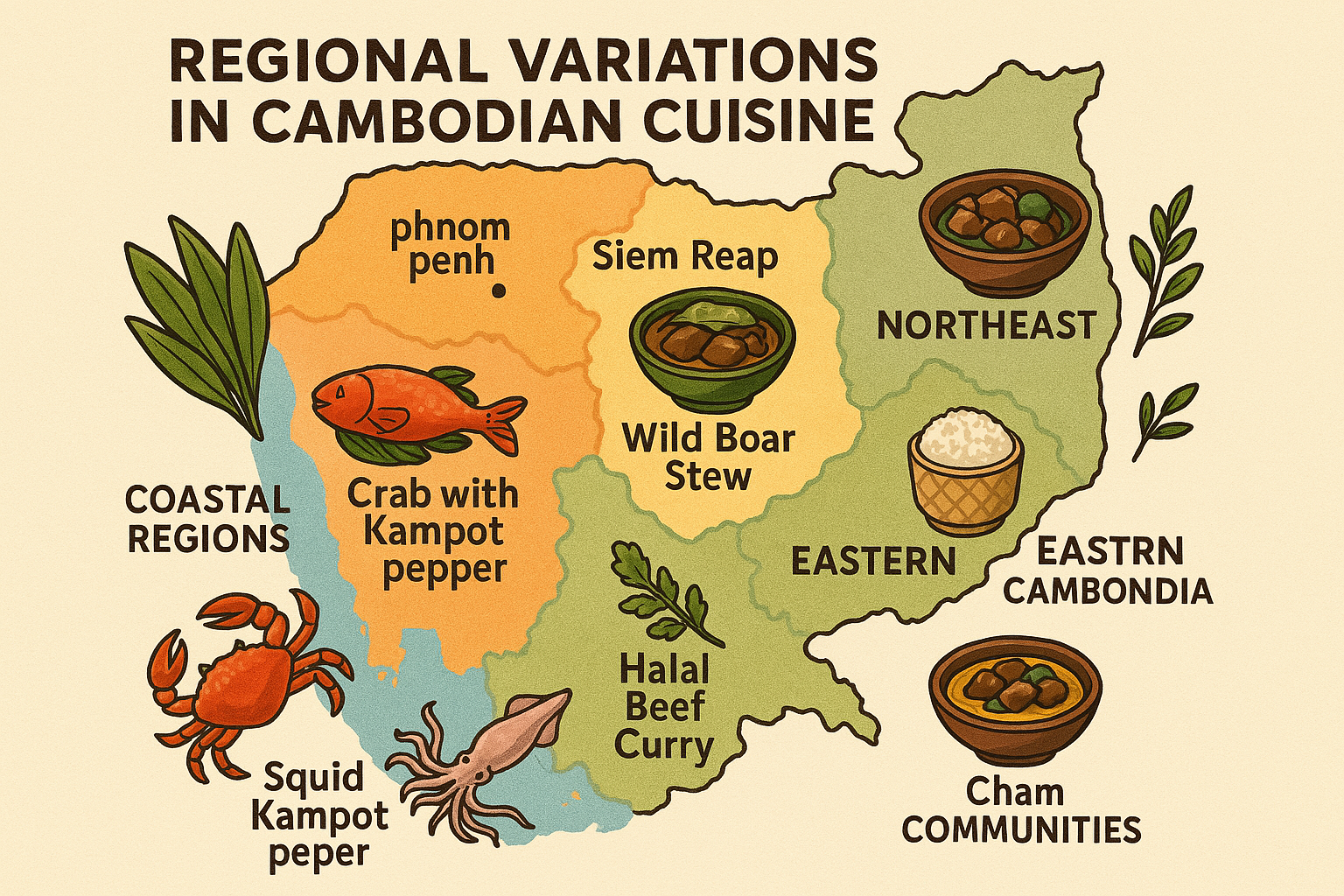Khmer cuisine is more than just a collection of recipes—it’s a way of life. Rooted in tradition, the cooking techniques used across Cambodia reveal a deep connection to land, heritage, and community. From open fires in rural kitchens to the rhythmic pounding of mortar and pestle, every method carries centuries of cultural memory and flavor.
1. Open-Fire and Clay Pot Cooking: The Heart of Rural Kitchens
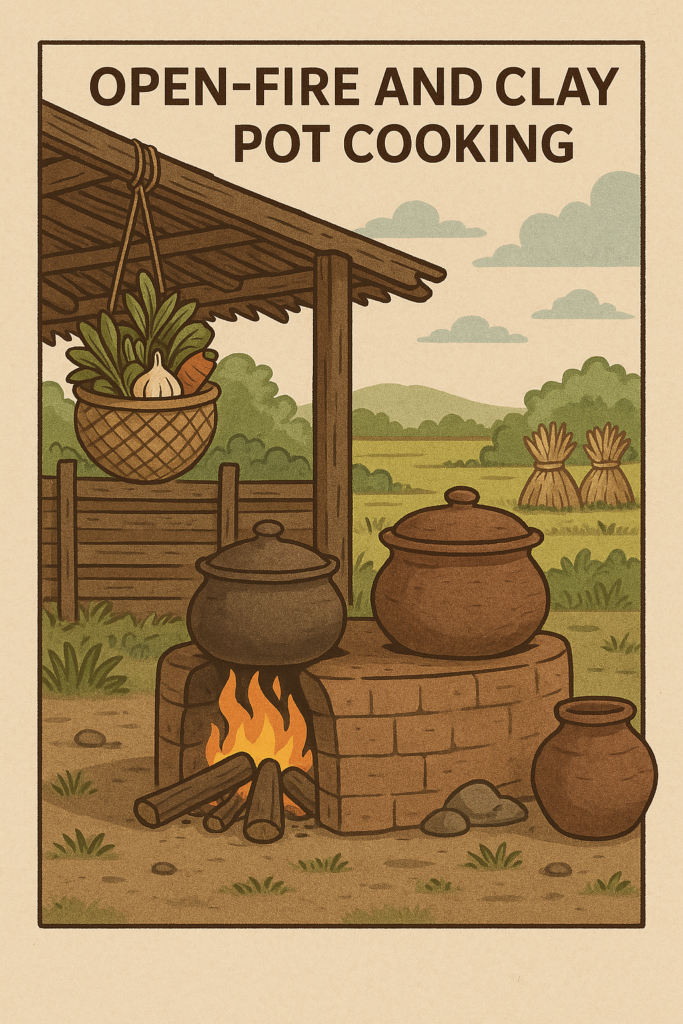
In rural Cambodia, cooking over open fires remains the standard. Clay stoves fueled by wood or charcoal are used to prepare everything from soups to grilled meats. These traditional setups are cost-effective and impart a distinct smoky depth that no modern appliance can replicate.
Clay pots are especially treasured for slow-cooking dishes like samlor korko (mixed vegetable stew) and prahok ktis (fermented fish paste dip with coconut). Their porous nature allows gentle heat distribution, preserving delicate flavors.
2. Steaming, Grilling, and Slow Cooking in Khmer Cuisine
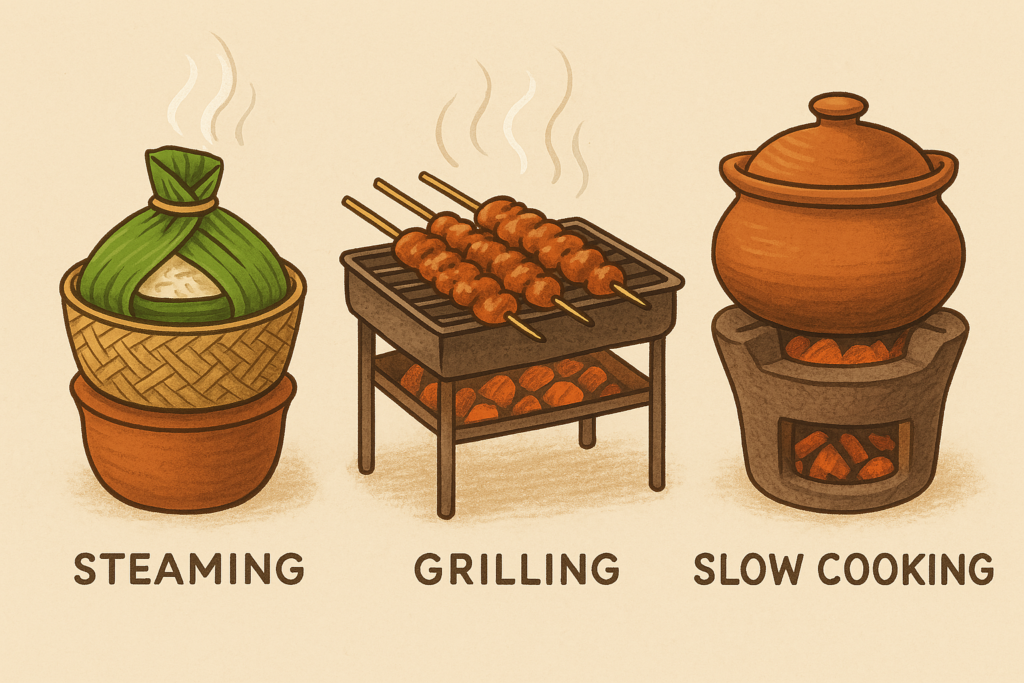
Khmer culinary artistry often relies on gentle heat and patience. Steaming is used for delicate dishes like amok trei (fish mousse in banana leaves), where ingredients must be cooked slowly to blend spices and coconut milk perfectly.
Grilling, on the other hand, is central to street food—ping kai (grilled chicken) and ang dtray-meuk (grilled squid) are popular examples, marinated in lemongrass, garlic, and palm sugar. Slow cooking allows the infusion of flavors, especially in broths and stews like khor sach chrouk (braised pork with eggs).
3. Mortar and Pestle: The Soul of Flavor in Khmer Kitchens

Before blenders and food processors, there was the mortar and pestle—and in Cambodia, this tool is still king. Known locally as kruos (mortar) and bok (pestle), this tool is used to grind fresh spice pastes, kroeung, which are the aromatic foundation of countless dishes.
Kroeung comes in red, green, and yellow varieties, depending on ingredients like lemongrass, galangal, turmeric, kaffir lime peel, and chili. Pounding releases oils and scents that cutting simply can’t, making it a sensory ritual as much as a practical task.
4. Fermented Ingredients: The Funky Backbone of Khmer Flavors

Fermentation is an ancient practice that gives Khmer food its distinctive punch. From prahok (fermented fish paste) to kapik (shrimp paste) and fermented vegetables, these strong umami flavors are central to traditional cooking.
These ingredients are often controversial to foreign palates but are essential to Khmer identity. They act as both flavor enhancers and sources of protein, especially in rural areas.
5. Banana Leaves: Nature’s Wrap for Steaming and Flavor

Banana leaves are used widely in Cambodian cooking as natural wrappers. They’re biodegradable and aromatic, and add a subtle grassy note to dishes like num ansom (sticky rice cake with banana or pork) and amok trei.
They also serve practical purposes—keeping food moist while steaming, making it easier to transport, and adding an earthy scent that pairs beautifully with coconut and herbs.
6. Communal Cooking and Eating: A Cultural Bond

In Cambodian culture, food is deeply communal. Cooking is often a shared task, especially during festivals, weddings, and religious ceremonies. Extended families gather around large pots, slicing, grinding, and stirring together.
Meals are eaten family-style, with shared dishes placed at the center and everyone sitting on mats or low stools. The act of eating together is as important as the food itself—a daily reaffirmation of community and kinship.
Conclusion: Cooking as Cultural Memory
Traditional Khmer cooking techniques are more than culinary methods—they’re cultural practices that bind generations, preserve identity, and celebrate simplicity and connection to nature. As Cambodia modernizes, preserving these timeless techniques ensures that the soul of Khmer cuisine continues to nourish future generations.

